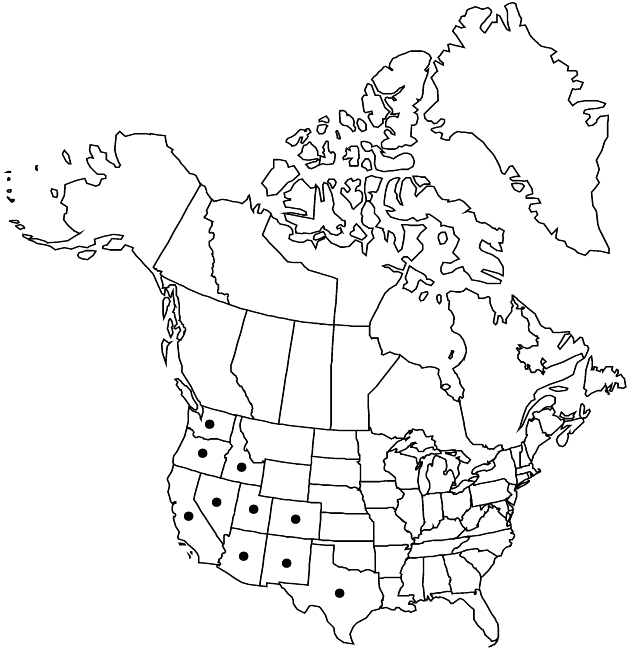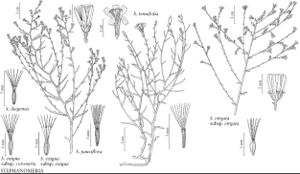Difference between revisions of "Stephanomeria exigua subsp. exigua"
imported>Volume Importer |
imported>Volume Importer |
||
| Line 58: | Line 58: | ||
|publication year= | |publication year= | ||
|special status=Illustrated | |special status=Illustrated | ||
| − | |source xml=https:// | + | |source xml=https://bitbucket.org/aafc-mbb/fna-data-curation/src/2e0870ddd59836b60bcf96646a41e87ea5a5943a/coarse_grained_fna_xml/V19-20-21/V19_556.xml |
|tribe=Asteraceae tribe Cichorieae | |tribe=Asteraceae tribe Cichorieae | ||
|genus=Stephanomeria | |genus=Stephanomeria | ||
Latest revision as of 19:53, 5 November 2020
Heads in paniculiform arrays. Peduncles 10–40 mm, glabrous or sparsely glandular. Calyculi of appressed bractlets. Involucres glabrous or sparsely glandular. Florets 5–8. Cypselae 2.6–3.2 mm; pappi of 5–13 white to light tan bristles (widened bases persistent, bases connate in groups of 2–4, if bristles 5, breaking off completely, bristles plumose on distal 50%). 2n = 16.
Phenology: Flowering May–Jul.
Habitat: Sandy soils, deserts, sagebrush, creosote bush, pinyon-juniper woodlands, Joshua Tree communities
Elevation: 100–2000 m
Distribution

Ariz., Calif., Colo., Idaho, Nev., N.Mex., Oreg., Tex., Utah, Wash., Mexico (Baja California).
Discussion
Subspecies exigua is morphologically variable. Plants with pappi of 5 bristles (often called Stephanomeria pentachaeta) are found throughout its distribution; they are fully interfertile with plants having more bristles. Stephanomeria schottii A. Gray from southern Yuma County, Arizona, described as having a pappus of 4–6 bristles, “sparsely short-plumose toward the summit,” appears to be a synonym of subsp. exigua.
Selected References
None.
